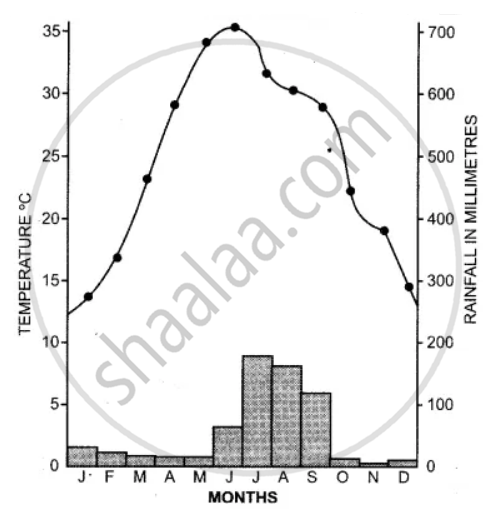Advertisements
Advertisements
प्रश्न
Mountains are cooler than the plains.
उत्तर
As per the Normal Lapse rate phenomena temperature decreases with increasing altitudes at the rate of 6.5°C for every 1000 mts of ascent. Thus mountains are cooler than the plains.
APPEARS IN
संबंधित प्रश्न
Name two types of cyclonic systems that affect India and two areas that receive rainfall from these systems.
Name the state in India through which the standard meridian of India and the Tropic of Cancer pass covering the longest distance.
Study the temperature and rainfall graph of station X given below and answer the questions that follow :

(i) Is the location of station X inland or coastal?
(ii) What is the cause of a sudden fall of temperature in July, even though it is a summer month?
(iii) Mention one main feature of the climate experienced by the station X.
Study the climatic data provided in the table below for a city A in India and answer the questions that follow :
| City | T/R | J | F | M | A | M | J | J | A | S | O | N | D |
| A | T | 20 | 23 | 26 | 32 | 35 | 39 | 34 | 28 | 25 | 28 | 24 | 21 |
| R | 14 | 23 | 27 | 42 | 121 | 231 | 300 | 306 | 289 | 160 | 34 | 5 |
T = Mean monthly temperature in degree Celsius (°C).
R = Average monthly rainfall in millimeters (mm).
(i) Mention two main features of the climate experienced by station A.
(ii) Calculate the annual rainfall for station A.
In the upper layers of the troposphere ______ are found.
______ experience continental climate.
List the factors aff ecting climate of India.
Name the areas which receive heavy rainfall.
Distinguish between
Weather and Climate
Give reasons for the following topic:
The relief of India has a great bearing on the climate.
